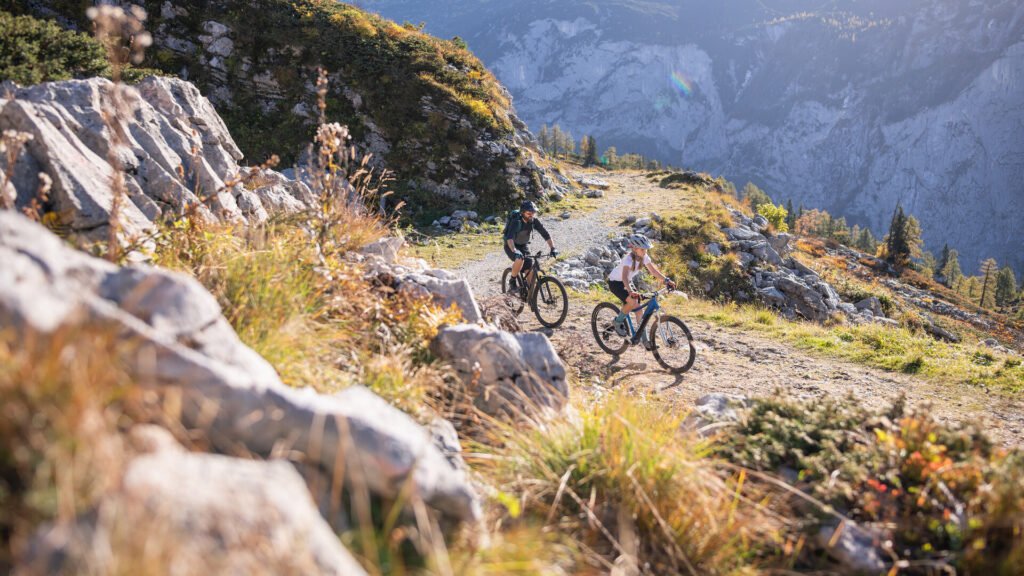Transporting your bike safely and securely on a vehicle is essential for both the safety of your bike and the convenience of your journey. Whether you’re heading out for a cycling adventure, a race, or simply a weekend getaway, loading your bike onto a carrier rack should be straightforward, quick, and easy. However, many cyclists may not be familiar with the proper steps to ensure that their bike is loaded securely without damage.
In this article, we’ll cover everything you need to know about loading your bike onto a carrier rack, from preparing the bike to ensuring it stays securely fastened during transport. Following these tips will help you keep your bike in top condition while making the loading and unloading process as simple as possible.

Choose the Right Rack for Your Needs
Before getting into the specifics of how to load your bike, it’s important to choose the right bike rack. The type of rack you need will depend on several factors, including your vehicle’s compatibility, how many bikes you need to transport, and the type of cycling you do.
Roof Racks
Roof racks are a great option for cyclists who prefer to keep their rear view clear and still have the ability to transport multiple bikes. Roof racks mount on the roof of the vehicle and allow you to transport bikes without blocking access to the trunk or hatch. However, they do require lifting the bikes onto the roof, which can be challenging, especially for larger bikes or when you’re loading more than one.
Considerations:
- Suitable for vehicles with roof rails or a roof rack system.
- Ideal for transporting one or two bikes.
- Requires lifting bikes to a high height, which may not be ideal for everyone.
- May affect fuel efficiency due to wind resistance.
Hitch Racks
Hitch racks are one of the most popular types of bike carriers because they are easy to load and unload. These racks are mounted on the back of the vehicle, where the hitch receiver is located. Hitch racks can accommodate multiple bikes and are much easier to load since they are lower to the ground.
Considerations:
- Compatible with vehicles that have a hitch receiver.
- Can carry more than one bike, making them ideal for families or groups.
- Some models tilt down for easy access to the trunk even with bikes mounted.
- Takes up space on the rear of the vehicle, which may obstruct the rear view.
Trunk Racks
Trunk racks are a great option for those who don’t want to install a hitch or roof rack. These are the most affordable bike racks and are easy to install. They work by securing the rack to the vehicle’s trunk with straps. Trunk racks are lightweight, portable, and generally the easiest to store when not in use.
Considerations:
- Good for short trips and occasional use.
- May block access to the trunk, making it difficult to load or unload items from the vehicle.
- Typically carry fewer bikes (1 to 3), and may not be ideal for long road trips with multiple bikes.
- Requires securing the rack to the vehicle every time it’s used, which can take a few minutes.

Prepare Your Bike for Transport
Once you’ve chosen the right rack for your vehicle, the next step is preparing your bike. While loading the bike, it’s important to make sure the bike is in good condition and ready for transport. This will help avoid potential damage to both your bike and the vehicle.
Remove Loose Items
Before loading your bike, make sure to remove any accessories that are not securely attached to the bike, such as water bottles, bags, or loose gear. These items can fall off during transport, causing potential damage to your bike or the vehicle. Additionally, some items, like a bike-mounted pump, could get in the way when you’re securing the bike to the rack.
Check Tire Pressure
Make sure your bike tires are properly inflated before loading it onto the rack. Properly inflated tires are essential to avoid damage during transport. If the tires are under-inflated, they could become flattened or damaged, especially if your bike is loaded onto a roof rack and subjected to bumps and jolts during travel.
Remove Front Wheel (Optional)
While it’s not always necessary, removing the front wheel can make loading your bike easier, especially for roof racks or for transporting bikes with larger frames. This will reduce the size and weight of the bike, making it easier to handle when lifting. If you remove the front wheel, make sure to secure it with straps or store it safely in your vehicle to prevent it from rolling around.
Protect the Frame
If you’re concerned about your bike’s frame getting scratched or damaged during transport, consider wrapping parts of the bike with protective padding or cloth. Many high-end bike racks come with padded cradles and straps that will help prevent your bike from coming into direct contact with the rack itself.
Loading the Bike onto the Rack
Now that your bike is prepared, the next step is loading it onto the rack. This is where careful handling comes into play to make sure that the bike is securely mounted and won’t move during transit. Depending on the type of rack you are using, the loading process will differ slightly, but the general principles remain the same.
Roof Rack Loading
For roof racks, you’ll need to lift the bike onto the roof of your vehicle. This can be a physically demanding task, especially for larger bikes or for taller vehicles. Here are some tips for making this process easier:
- Lift the bike carefully: Make sure to lift the bike by the frame, not the wheels, to avoid unnecessary strain on your arms and back.
- Align the bike with the rack: Position the bike so that it fits securely onto the rack. Make sure that the bike’s front fork is properly seated in the mount, and ensure that the bike is oriented in the right direction.
- Secure the bike: Once the bike is mounted, secure it using the rack’s straps, clasps, or locking mechanisms. Ensure that the bike is tightly fastened and won’t wobble during transport. You should also check that the wheels are firmly attached to the rack.
Hitch Rack Loading
Hitch racks are easier to load since the rack is lower to the ground. Here’s the process for loading your bike onto a hitch rack:
- Position the bike near the rack: Bring the bike close to the rack, and align it with the cradles or mounting points on the rack.
- Lift the bike: If necessary, lift the bike onto the rack. Because hitch racks are closer to the ground, this is usually much easier than roof racks.
- Secure the bike: Use the straps, cradles, or locking mechanisms provided by the hitch rack to secure the bike. Make sure the bike is positioned properly to prevent any movement during transit.
Trunk Rack Loading
Trunk racks are the simplest to load because they don’t require lifting the bike high up. The process is straightforward:
- Position the bike near the trunk: Position the bike so that it is aligned with the straps or cradles of the trunk rack.
- Attach the bike: Secure the bike to the trunk rack using the provided straps. Make sure that the frame is properly positioned, and that the bike is held tightly against the trunk to avoid any movement.
- Check for stability: Before hitting the road, gently shake the bike to ensure it’s securely fastened. If it moves at all, adjust the straps or mounts until it’s stable.
Double-Check and Secure
Once your bike is loaded onto the rack, it’s essential to double-check that everything is secure. Make sure that the bike is tightly strapped, and that no part of the bike is loose or dangling. If you’re using a roof rack, make sure the bike is balanced properly to avoid it tilting or shifting while driving. For hitch and trunk racks, ensure that all straps are tight, and check that the bike can’t sway or move during transit.
Tips for Safe and Secure Bike Transport
- Drive carefully: Once your bike is loaded onto the rack, drive carefully, especially when cornering or going over bumps. Excessive speed or sudden braking could cause the bike to shift.
- Check the bike periodically: If you’re taking a long trip, it’s a good idea to check the bike periodically to ensure that the rack is still secure, and the bike hasn’t shifted.
- Use a bike cover: If you’re traveling for an extended period, consider using a bike cover to protect it from dirt, dust, and road debris.

Conclusion
Loading your bike onto a carrier rack doesn’t have to be a difficult or stressful process. By choosing the right rack for your vehicle and following these simple tips, you can ensure that your bike is safely and securely transported to your next cycling adventure. Whether you’re heading to a race, a scenic trail, or just commuting across town, having a properly loaded and secured bike will ensure that your ride is safe and enjoyable.
Let us know if you need any further assistance with your bike rack journey, and happy cycling!
